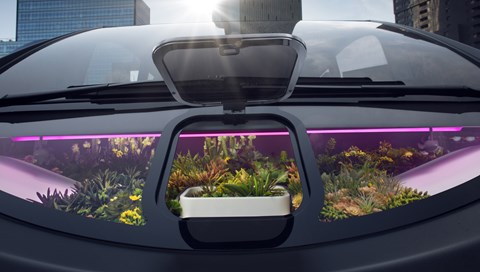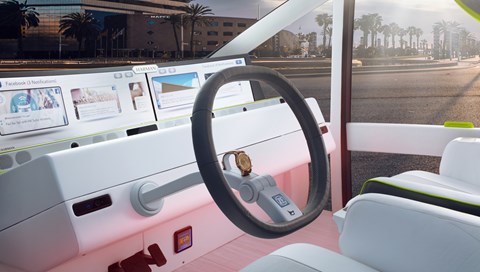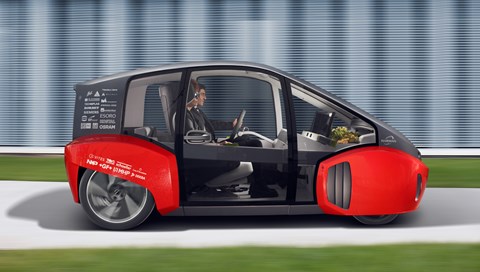► Self-driving city car designed for sharing
► On display at CES, Detroit and Geneva 2017
► ‘Enough space for growing radishes or even little Bonsai trees’
Good old Rinspeed. The Swiss automotive technology consultancy can always be trusted to create a reliably bonkers concept car each year, and 2017’s Consumer Electronics Show (CES) will be no exception.
Say hello to the Rinspeed Oasis concept, described as a ‘manoeuvrable speedster with an integrated small garden plot behind the windshield.’
An integrated what?
You read that right. A sort of dash-mounted flowerbed, with a front-mounted access panel to tend to its contents. Rinspeed says the garden area has ‘enough space for growing radishes or even little Bonsai trees.’ Told you it was mad…
The on-board topiary really is just garnish, though, literally and metaphorically; the Oasis concept’s main purpose is as a study in what kind of role cars could play in urban environments in the future, and a showcase for various automotive supplier companies to show off their wares.

So if it’s not a mobile greenhouse, what exactly is the Rinspeed Oasis?
A two-seater city car: it’s self-driving, and electric, as now seems mandatory for all future-gazing concept cars. It’s driven by two in-wheel electric motors with torque vectoring, supplied by ZF, and reputedly has the ability to turn almost within its own length.
Star Wars’ R2D2 is quoted as a design inspiration, presumably owing to its front wheel shrouds and roof-mounted antennae for transmitting no small amount of data for its various internet-based systems – more on which shortly.
No concept car would be complete without huge wheels, hence the 20in rims.
What kind of theoretical customer is the Oasis concept aimed at?
Rinspeed’s vision is that the car could be privately owned, publicly hired, or used by companies as a courier service. Or even all three ‘if society is willing to share goods in a beneficial way,’ says Rinspeed. So the Oasis could theoretically be a taxi by day, pizza delivery vehicle by night and appearing on Gardeners’ World at the weekend.
Rinspeed suggests a scenario where after dropping its owner off at an airport, the Oasis notifies members of the public on social media that it’s available for rides, and can be summoned via WhatsApp, for example.
Once it’s done being a taxi, it drives itself back to the airport ready to pick up its improbably generous owner from the arrivals terminal.

Hmm. The interior looks interesting…
A curved widescreen display from supplier Hayman makes up the main user interface display, configured for both voice and gesture control. It allows occupants to surf social media, reserve tables at restaurants, make Skype phonecalls, and various other app-based activities. The seat can fully recline, all the better to view the on-board cinema system, and the Oasis can also take snapshots of sunsets and the like while driving to ‘keep Instagram followers up to date.’ Rinspeed’s words.
A giant head-up display beams graphics across the windscreen as a whole. In self-driving mode, the steering wheel folds flat, turning into a work surface (the inevitable ‘office on wheels’ concept). When manual human-driven mode is selected, only essential information is displayed on the windscreen and display panel, and the camera-equipped rear-view mirror displays are activated.
Where can I see this thing?
At the CES in the Hard Rock Hotel, Las Vegas in January 2017, the NAIAS in Detroit the same month, and at the Geneva motor show in the spring.
Read the story of when CAR drove Rinspeed’s amphibious Lotus Elise
